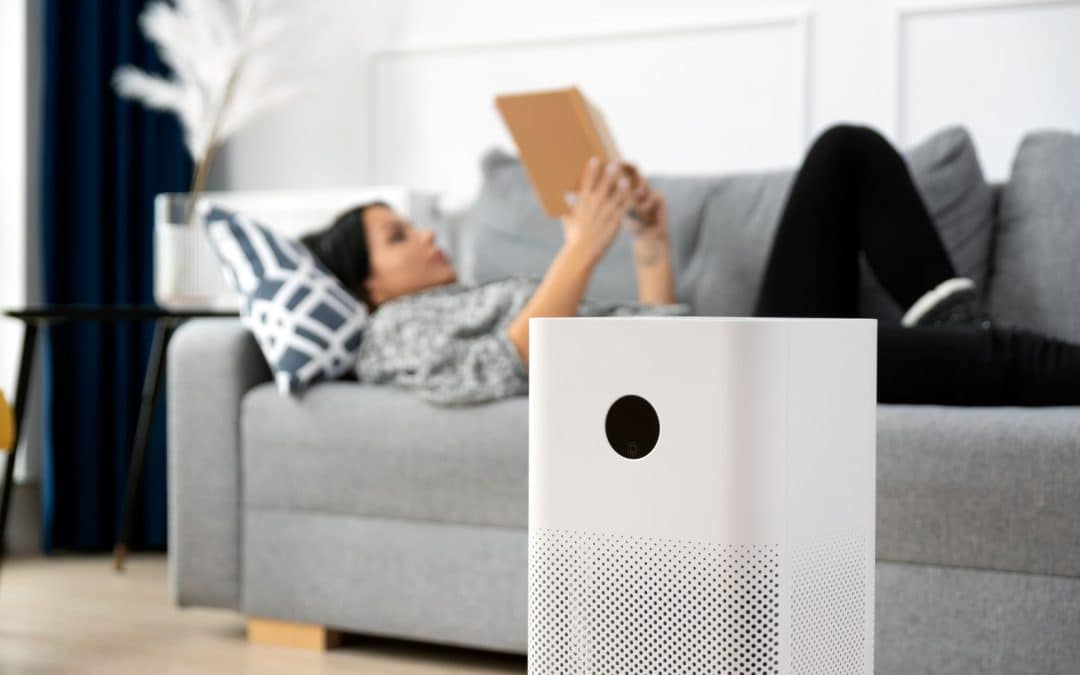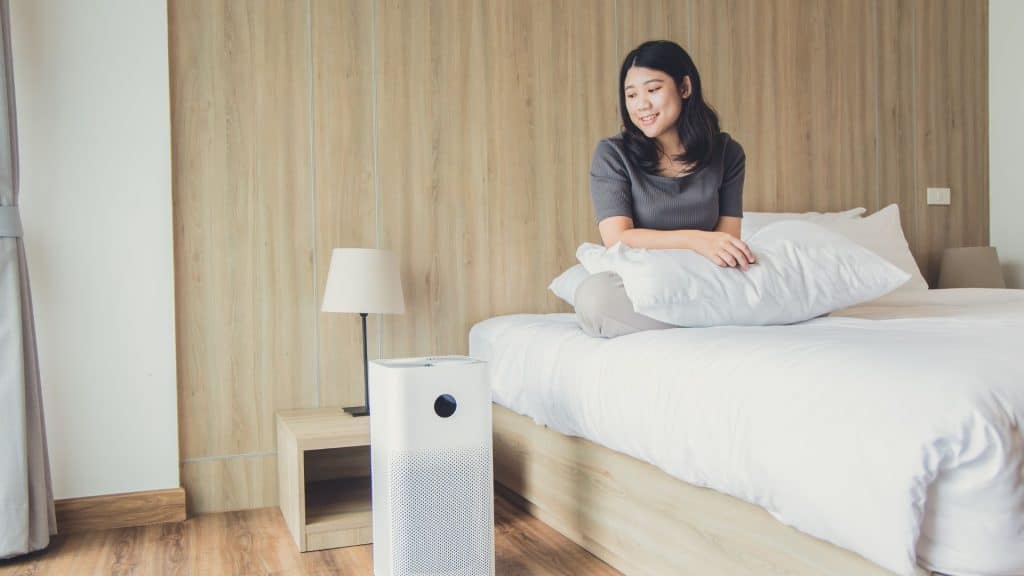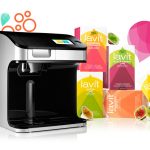If you are researching whether passive or active air purification will help you stay healthy this winter, you likely place a high value on your health. And you are not alone.
Starting in 2020, the United States saw a sharp increase in the sales of air purification systems. As we come up on the fourth anniversary of the beginning of the COVID-19 pandemic, more and more people recognize the value of breathing clean, virus-free, and fresh air within their homes and workplaces.
Two very different technologies are available to improve indoor air quality – passive or active air purifiers. Knowing the differences and the advantages and disadvantages of each can help you make the right choice for your health.
What is Air Purification?
Air purification removes air pollutants from the air to improve indoor air quality. These pollutants include dust, pollen, dander, mold spores, smoke, and, yes, even bacteria and viruses. Whether your concerns about air quality center around allergies, smoke from cigarettes, cigars and wildfires, or airborne viruses, breathing in air pollutants can adversely affect our respiratory, reproductive, nervous, and cardiovascular systems.
Passive or Active Air Purification – Key Differences in How They Work
While either passive or active air purification systems are effective against indoor air pollutants, there are critical differences in how they work.
How Passive Air Purification Works
Passive air purification systems rely on natural processes or mechanical filtration to clean the air. These systems do not release any “cleaning” agents into the air but instead trap and remove particles through filters or other physical means.
HEPA filters, in particular, are the backbone of many passive air purification systems. These filters work by physically trapping particles as air passes through them. They can effectively remove dust, pollen, mold spores, and other allergens from the air, making them ideal for allergy and asthma sufferers.
How Active Air Purification Works
Active air purification systems are a much more proactive approach to eliminating airborne pollutants. These systems release ions into the air, interacting with and neutralizing harmful particles, seeking and destroying live viruses, bacteria, mold, and other harmful pollutants.
Active air purification systems utilize state-of-the-art technologies such as ionization. When negative ions are released into the air, they attach to positively charged particles like dust, smoke, and pollen. When positive and negative ions bond, the resulting neutral compound is no longer a harmful air pollutant.
Another technology used in active air purification is photocatalytic oxidation (PCO). PCO technology combines UV light with a photocatalyst to generate hydroxyl radicals. These radicals break down volatile organic compounds (VOCs), bacteria, and other pollutants into harmless byproducts.
You Might Like: Hydration in Winter: Drink Purified Water to Stay Healthy
Passive or Active Air Purification – Pros and Cons
Choosing between passive or active air purification methods requires that you consider your specific needs, the pollutants you want to target, and the ongoing maintenance requirements for each system. Here are some pros and cons of each method:
Passive Air Purification Systems
Pros
- Proven effectiveness in removing airborne particles, allergens, and pollutants.
- Do not produce any harmful byproducts such as ozone.
- Generally, it consumes less energy than active air purification systems.
Cons
- May not be as effective in eliminating certain volatile organic compounds (VOCs) or pathogens as active methods.
- Filter replacement is required regularly, adding to the maintenance costs.
Active Air Purification Systems
Pros
- Effectively seek and destroy a wide range of pollutants, including bacteria and viruses.
- Improve indoor air quality quickly by actively neutralizing pollutants in real time.
- Often include additional features like odor elimination and mold control.
Cons
- Filters or plates in active systems require regular cleaning or replacement.
- Certain systems may produce ozone as a byproduct, which can be harmful in high concentrations.
- More energy-intensive than passive air purification methods.
Also On Our Blog: Health Benefits of Drinking Tea at Work
Elevating the Air You Breathe with ActivePure Air Purification
Discussion of passive or active air purification systems would only be complete by mentioning one notable technology – ActivePure, developed alongside NASA to help astronauts grow plants in space.
And now, you can have this cutting-edge technology right in your Colorado Springs home or office.
ActivePure technology has several advantages. It is highly effective in removing many pollutants, including bacteria, viruses, mold spores, and VOCs and can significantly improve indoor air quality. ActivePure technology has been extensively tested and proven to be safe and effective and is used in many hospitals and healthcare settings to reduce the spread of illness.
Related: Benefits of ActivePure Office Air Purifiers in A Post-Pandemic World
Breathe Easy with ActivePure from Colorado Pure
There are definite benefits to choosing either passive or active air purification systems for your home or business in Southern Colorado. But if you are looking for the best, most trusted air purification solution, Colorado Pure is your source for ActivePure technology.
Our active air purification systems can help you achieve optimal indoor air quality, keeping you and your loved ones healthy and protected against viruses and bacteria.
Our team of experts at Colorado Pure can provide you with a free quote and more information about ActivePure air purifiers for Southern Colorado homes and businesses..
Are you ready to prioritize your health? Breathe easy with Colorado Pure and experience the benefits of clean, fresh air.







